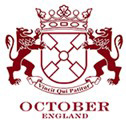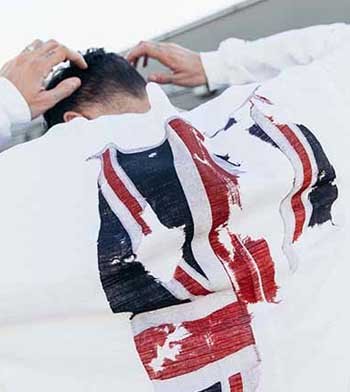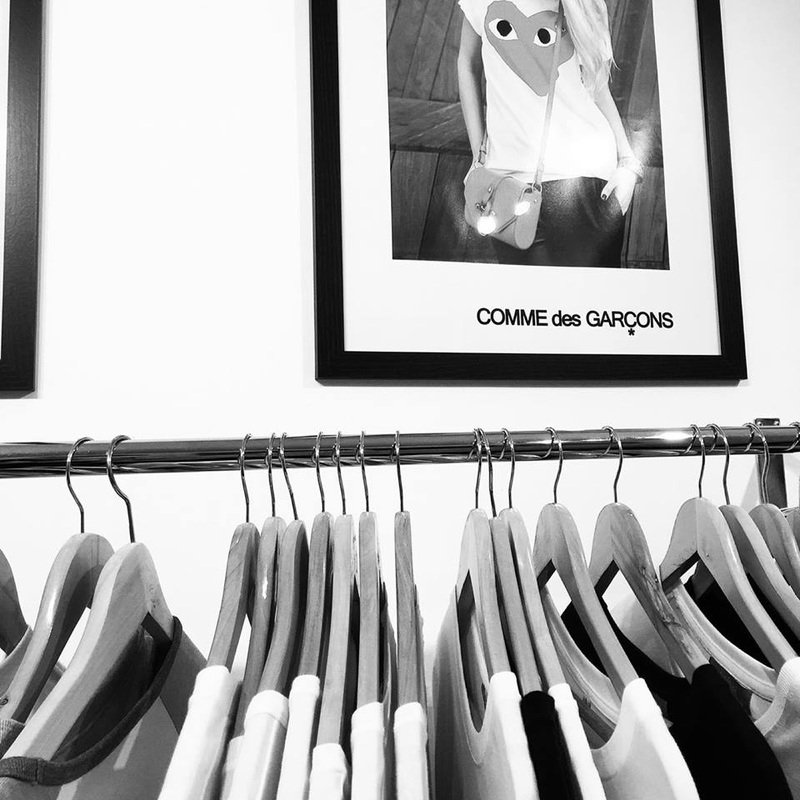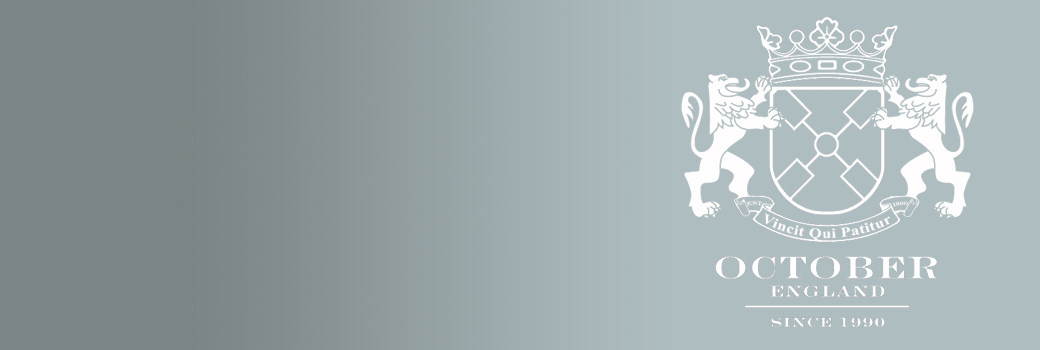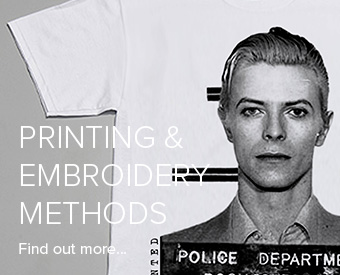Part two. With the fast paced nature of embroidery production, many people come into contact with an embroidery logo from its inception right through to the post production finished article. This can cover designers, digitisers, buyers, embroiderers and sales people.
Duncan Yarnall from embroidery thread manufacturer Robison Anton gives a definitive list of embroidery terms to act as a point of reference for new embroiderers. Part three follows next month
D
Design: Stitches that compose a pattern or monogram.
Design Library/Catalogue: A computer program that catalogs a collection of digitised designs kept by embroidery shops, allowing an embroiderer to access the design by subject, stitch count, number of colours, or icon.
Digitise: The computerised method of converting artwork into a series of commands to be read by an embroidery machine’s computer. Digitising is extremely important and will determine the quality of the finished embroidery. Every action of the embroidery machine is controlled by the digitised program including the movement of the pantograph to form various stitches, thread changes, thread trims, and many other functions. See punching.
Digitising Tablet: A computer-aided design device used by digitisers to plot needle penetration for embroidery designs. Typically, a pencil drawing of the design is enlarged and then taped to this tablet. The digitiser then uses a mouse to select stitch types, shapes, underlay, and actual needle penetrations.
Disk Reader: An external or internal device used to read the digitised program that determines the embroidery machine movements.
E
Editing: Changing aspects of a design device via a computerized editing program. Most programs allow the user to scale designs up or down, edit stitches block by block; merge lettering with the design; move aspects of the design around; and combine designs or edit machine commands.
Emblem: Embroidered design with a finished edge; commonly an insignia of identification; usually worn on the outer clothing. Historically, an emblem carried a motto or verse or suggested a moral lesson. Also know as a crest or patch.
Embroidery: Embroidery is “thread art” used to embellish a garment, hat or some other product by adding a sewn pattern. Generally, this sewn pattern includes a design and can also include lettering and/or monograms.
Embroidery Machine: Today, embroidery machines can be defined as computer driven machines that move a pantograph with hooped items in various directions to form different stitches. Embroidery machines can be single-head units or come in multiples of heads with multiple needles per head for production embroidery applications.
Embroidery Point: Unit of measurement in embroidery in which 10 points equals 1mm or 1 point equals .1 mm.
Expanded Format: A design programme in which individual stitches in a design have been specifically digitised for a certain size. Designs punched in this format cannot generally be enlarged or reduced more than 10 percent to 20 percent without distortion because stitch count remains constant.
F
Fabric Grin Through: Where the fabric is seen through the embroidery design either in the middle of the pattern or on the edge. See also gapping.
Fill Stitches: One of the three most common stitches used in embroidery along with the run stitches and satin stitches. Fill stitches are used to cover large areas and they generally have a flat look. Altering the angle, length and direction of the stitched pattern can create different types of fill patterns.
Finishing: Processes performed after embroidery is complete. Includes trimming loose threads, cutting or tearing away excess backing, removing topping, cleaning any stains, pressing or steaming to remove wrinkles or hoop marks; and packing for sale or shipment.
Flagging: The up and down motion of the material with the needle that is caused by improper hooping, the presser foot not being properly adjusted (too much clearance with needle plate), and improper fabric stabilisation (incorrect backing).
Named because of its resemblance to a waving flag. Flagging generally causes improper needle loop formation that can lead to skipped stitches and thread breakage. Flagging can also negatively impact the appearance of the finished product resulting in poor design registration.
Flat Embroidery: Embroidery that is cut in panels or patches that is framed in hoops on a flat surface above the embroidery machine’s hook assembly.
Frame: Holding device for goods to be embroidered. Ensures stability of the goods during the sewing process. May employ a number of means for maintaining stability during the embroidery process, including clamps, vacuum devices, magnets, or springs. See hoop.
Frame Sash: Part of the pantograph to hold the frames. Also called a sash. Varieties of sash types include: border, frame, tubular, cap, and sock.
Framing Press: Machine used to aid the framing or hooping process.
G
Gapping: Where the fabric is seen through the embroidery design either in the middle of the pattern or on the edge. See also fabric grin through.
H
Hook Assembly: Stitch forming devise used to interlock the needle thread with the bottom thread. The hook assembly consists of the following components: hook base, bobbin case holder, retainer or gib, deflector plate, bobbin case, and bobbin.
Hoop: Device made from plastic, metal, or wood that grips the fabric tightly between an inner and outer ring and attaches to the machine’s pantograph. Machine hoops are designed to push the fabric to the bottom of the inner ring and hold it against the machine bed for sewing.
Hooping: Also called “framing”. The process where the item to be embroidered is loaded into a hoop. This hoop will later be loaded or attached to the pantograph for sewing.
Hooping Board: Board designed to hold the outer portion of the hoop while the goods to be embroidered are placed over the board to be hooped. Once the goods are aligned and placed correctly over the outer hoop, the operator inserts the inner portion of the hoop. Then the hoop is removed from the Hooping Board and attached to the pantograph for sewing. Helps ensure uniform placement of the hoop onto the material.
J
Jumbo Rotary Hook: Rotary hook, which holds a bobbin case with a much larger thread capacity than a standard hook.
Jump Stitch: Movement of the pantograph and rotation of the sewing head without the needle moving up and down. Used to move from one point in a design to another. Also, used to create stitches that are longer than the machine would normally allow.
L
Lettering: Embroidery using letters or words. Often called “keyboard lettering.” Usually computer generated either on the machine or a stand-alone computer.
Locking Stitch: Commonly refers to a series of three to four very small stitches (1mm or less) either just before a trim or at the beginning of sewing following a thread trim. Also referred to as Tie In or Tie Off stitches. Used to prevent the stitching from unraveling after the embroidery is completed.
Lockstitch: The name used for a stitch that is formed with a needle and bobbin thread. The needle thread is interlocked with the bobbin thread to form a stitch. Also referred to as ISO4915, stitch number 301. On apparel sewing applications other than embroidery, a well-balanced lockstitch will use the same amount of needle thread as bobbin thread. On embroidery applications, this is not true because you never want to see the bobbin thread on the topside of the sewn product. Therefore the needle thread is held on the underneath side by the bobbin thread.
Lockstitch Machine: Machine that forms a stitch using a needle and hook assembly. Most embroidery machines are lockstitch machines.
Logo: Name, symbol or trademark of a company or organisations. Short for logotype.
Looping: Loops on the surface of embroidery generally cause by poor top tension or tension problems. Typically occurs when polyester top thread has been improperly tensioned. Looping can also occur as the result of a skipped stitch.
Low Speed Function: Setting on the machine that allows the machine to run at a lower speed than that set by the speed control knob.
M
Machine Language: The codes and format used by different machine manufacturers within the embroidery industry. Common formats include Barudan, Brother, Fortran, Happy, Marco, Meistergram, Melco, Pfaff, Stellar, Tajima, Toyota, Ultramatic, and ZSK. Most digitised systems can save designs in these languages so the embroidery machine can read the computer disk.
Marking: Marking of goods to serve as an aid in positioning the frame and referencing the needle start points.
Mirror: A program menu option that allows reverse imaging of a pattern to be sewn. See also rotate pattern.
Modular: Machine system where many separate stitching heads or configurations of heads are controlled by a central computer.
Monogram: Embroidered design of one or more letters, usually the initials in a name.
Moss Stitch: See chenille.
N
Needle: The stitch forming devise that carries the thread through the fabric so it can be interlocked with a bobbin thread. Sewing machine needles generally have nine basic parts including the butt, shank, shoulder, blade, groove, scarf or spot, eye, point, and tip. Needles are available with various points. These include: Sharp points for piercing heavy, tightly woven fabrics; Ball pointed needles for sewing knits; and, A variety of specialty points for sewing leather and vinyl. Needles also come in many sizes. Two of the most common needle size systems are the metric size (i.e.,60, 70, 75, 80, 90); and the Singer numbering system (i.e.,9, 12, 14, 16).
Needle Bar: Bar that carries the needle up and down so a stitch can be formed. Each embroidery machine head can have up to 15 needle bars that can be selected to form the embroidery stitch pattern.
Needle Plate: The metal plate located above the hook assembly of an embroidery machine. This plate has a hole in the centre through which the needle travels to reach the hook and form a stitch. Also know as a throat plate.
Network: 1) To link embroidery machines via a central computer and disk drive system. 2) A group of machines linked via a central computer.
Nippers: See thread clippers.
O
Offset: The ability to move the pantograph out of the stitching area with a specific movement and then return to the original point. Used for placing appliqué©s.
Origin: The starting point of your design.
P
Pantographs: A part of the embroidery machine that rests on the tabletop and moves the hoop to form the embroidery pattern.
Pantograph: The bar, rack, or holder on which frames or hoops are attached. The pantograph moves in X and Y directions to form the embroidery design, controlled electronically or mechanically depending on the machine.
Paper Tape: Media that is made from a continuous reel of paper or Mylar tape containing x-y coordinate information used to control the pantograph movement. Computer disks on newer machines have replaced paper tapes. Pattern storage media that is made from a continuous reel of paper or Mylar tape containing x-y coordinate information used to control the pantograph movement. Computer disks on newer machines have replaced paper tapes.
Pencil Rub: A low-cost way of producing a “sample” of an embroidery design. Accomplished by placing a piece of tracing paper over a sewn pattern and then rubbing lightly with a pencil to produce an impression of the embroidery.
Presser Foot: A metal ring around the needle that touches the fabric inside the hoop while the needle is down and beginning to rise to form a needle loop. The main function of the presser foot is to hold the fabric stationary until the hook point catches the thread loop formed by the needle. It helps to minimise flagging and therefore indirectly aids in loop formation.
Pre-Tensioner: Thread tension assembly that is located before that main tension assembly in the thread path. The function of the pre-tensioner is to apply a light amount of tension in order to remove any kinks in the thread prior to entering the main tensioner. See tensioner or tension assembly.
Puckering: Result of the fabric being gathered by the stitches. Causes include incorrect density, loose hooping, insufficient backing, or incorrect thread tensions.
Punching: Conversion of artwork into a series of commands to be read by an embroidery machine’s computer. Derived from an earlier method in paper tapes or Jacquards punched with holes controlled the movement of the pantograph and other commands. While still capable of producing paper tape, most computerised digitising systems now store this information on a disk format.
Push and Pull Compensation: A degree of distortion built into a design by the digitiser to compensate for the push or pull on the fabric caused by the embroidery stitches. This can help prevent a digitised circle from looking like an egg shape when sewn out. Generally, it is necessary to extend horizontal elements and reduce vertical elements.
For more information contact Duncan Yarnall on:
Tel: 0161 766 1333 Web: http://www.robison-anton.com/
Published: 04 April, 2008 Printwear and Promotion Magazine
